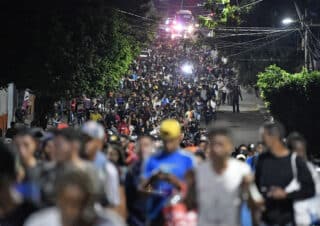Dear Winnie,
Sadly, I have to disagree with you that “we Filipinos do look at the data … before we make decisions.” Not always, unfortunately; we elected Mr. Duterte, didn’t we? Pronuclear propaganda like yours has bamboozled not just Filipinos, but so much of the world. Before accepting Mark Cojuangco’s comparison of Bataan Nuclear Power Plant (BNPP) and Tennessee’s Watts Bar II, did you really check the facts? Watts Bar II had to pass the rigorous safety standards of the US Nuclear Regulatory Commission. Did you compare those with Brian Dumaine’s meticulously-documented 1986 account in Fortune Magazine of how shoddily BNPP was built, “The $2.2 billion nuclear fiasco”?
That story relates how the Aquino administration “charges that [Westinghouse] bribed Ferdinand Marcos and did sloppy work. It wants restitution.” You were secretary of socioeconomic planning and Neda director-general at the time, no? Whatever changed your mind? Please don’t characterize Cory’s closure of BNPP as a mistake. That was one good thing she did. I have been publishing anti-BNPP pieces, “Forays” fortnightly on Rappler for a year now. “Where, oh where, would BNPP’s fuel come from?” documents that Australia has by far the most uranium in the world, but produces no nuclear energy for itself. What does Australia know that you and Cojuangco don’t? Most uranium is produced by corrupt and politically unstable Kazakhstan; can BNPP safely rely on it?
You accept the biggest scam of the global pronuke lobby: “… the cost of nuclear electricity is lower than the cost of coal-generated or oil-generated electricity … even … solar…” My dear, reactor fuel does not appear at the reactor magically, without cost in treasure and CO2 emissions. To feed the world’s reactors, about 65,000 tons of uranium were mined in 2020. Typical ores contain only 0.1-0.2 percent uranium, so more than 100 million tons of rock were mined or quarried, crushed, milled, and refined—operations that burn lots of diesel or other fossil fuels.
But that is only the beginning! The extracted uranium is mostly Uranium 238 — useless for fuel. Reactor fuel must contain 4-7 percent U235, which is only 0.725 percent in the uranium that leaves the mill. Enriching it requires continuously operating many large, expensive centrifuges, using great amounts of electricity from burning fossil fuels.
Then, there are the open-ended costs of safely containing their lethal wastes forever, an unsolved problem. Newer reactors are stuck with the same problem.
Australia guides its enlightened energy policy with a study it commissioned from physicist Manfred Lenzen. He reported that mining 0.15 percent of uranium ore generates about half as much CO2 as natural gas plants. When the richer ores are gone and the industry is forced to mine 0.01 percent ores to keep its reactors running carbon emissions from mining, it will exceed those from burning natural gas!
You ignore not only my work on BNPP’s hazards but also the work of Fernando Siringan and Mahar Lagmay, the only two geologists worthy of membership in the National Academy of Science and Technology. The volcanic and earthquake hazards at BNPP are very serious! You prefer the assessment of Cojuangco, whose highest educational attainment was an Australian high school degree.
C’mon, Winnie.
Kelvin S. Rodolfo, Ph.D.
Professor Emeritus of Earth and Environmental Sciences
University of Illinois at Chicago


